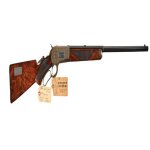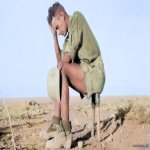You are using an out of date browser. It may not display this or other websites correctly.
You should upgrade or use an alternative browser.
You should upgrade or use an alternative browser.
Picture of the day
- Thread starter jwhc
- Start date
The Smith & Wesson M&P .38 Victory is a more accurate revolver to shoot and more popular than the Brit Enfield revolver, No.2 MK.1* with the hammer removed, single action only , Smith & Wesson supplied 571,629 .38 Victory revolver to the British Commonwealth, with over 45,000 revolvers supplied to Canada, Bloke on the Range , YouTube videos has some interesting videos comparing the British Commonwealth.38 revolvers , Webley , Enfield and Smith & Wesson , also the WW1 .455 Webley , Colt and Smith & Wesson revolvers
Last edited:
fat tony
CGN Ultra frequent flyer
Yeager with a 104G ???
NF-104A

Between December 1963 and January 1964, Yeager completed five flights in the NASA M2-F1 lifting body. An accident during a December 1963 test flight in one of the school's NF-104s resulted in serious injuries. After climbing to a near-record altitude, the plane's controls became ineffective, and it entered a flat spin. After several turns, and an altitude loss of approximately 95,000 feet, Yeager ejected from the plane. During the ejection, the seat straps released normally, but the seat base slammed into Yeager, with the still-hot rocket motor breaking his helmet's plastic faceplate and causing his emergency oxygen supply to catch fire. The resulting burns to his face required extensive and agonizing medical care. This was Yeager's last attempt at setting test-flying records.
Last edited:
Flown by "The craziest pilot in the RCAF."

Jimmy Doohan wasn't even in the RCAF. He was an artillery officer training to fly spotter planes.


In the late spring of 1945, on Salisbury Plain north of RAF Andover, he slalomed a plane between telegraph poles "to prove it could be done", earning himself a serious reprimand.
Jimmy Doohan wasn't even in the RCAF. He was an artillery officer training to fly spotter planes.
Dark Alley Dan
CGN Ultra frequent flyer
- Location
- Darkest Edmonton
The F7U Cutlass was referred to those who flew it as "The Gutless Cutlass". One test pilot said "There was never nothing wrong with it". Underpowered, ill-tempered, and with nose gear that put you 14 feet closer to God while parked, it was a wheezy lame duck of a plane that looked like a space fighter and flew like a concrete block.
It was pretty enough:

But deadly to its pilots. Here's one intrepid naval aviator in the act of being killed. Thanks, Vought engineers.

This from the article: "78 of 320 Cutlasses were lost in accidents in only 55,000 flying hours making it the most dangerous US Navy jet of all time."
Here's the story of the Blue Angel's experience with the thing:
An absolute sh!twagon, but it looked cool:

It was pretty enough:

But deadly to its pilots. Here's one intrepid naval aviator in the act of being killed. Thanks, Vought engineers.

This from the article: "78 of 320 Cutlasses were lost in accidents in only 55,000 flying hours making it the most dangerous US Navy jet of all time."
Here's the story of the Blue Angel's experience with the thing:
The Navy Flight Demonstration Squadron, the Blue Angels, flew two F7U-1 Cutlasses (BuNos 124426 & 124427) as a side demonstration during their 1953 show season in an effort to promote the new aircraft, but did not use them as part of their regular formation demonstration. Both the pilots and ground crews found the aircraft generally unsatisfactory, and it was apparent that the type was still experiencing multiple teething troubles. However, there were political pressures to adopt the Cutlass, both from several senior officers and from senators.[3] Among the failures were landing gear failures, hydraulic failures, engine fires while in the air and, on one occasion, a landing gear door fell on a spectator grandstand but, through sheer luck, did not injure anyone.
During the Blue Angels' first airshow appearance in 1953, pilot Lt Edward "Whitey" Feightner, the former program manager for the F7U, experienced a total loss of hydraulics on a full afterburner takeoff and steep climb. While trying to gain enough altitude for ejection he was able to stay with the aircraft until the backup system came on. He clipped trees on the end of the runway, causing the left engine to flame out. With hydraulic fluid streaming back in a bright flame, he made a hard turn and got the plane back on the runway, much to the excitement of the crowd. Later, while traveling to an airshow at Naval Air Station Glenview in Chicago, Illinois, another Blue Angel pilot, Lt Harding MacKnight, experienced an engine flameout in his Cutlass, forcing him to make an emergency landing at NAS Glenview. Traveling with him, Feightner was redirected to make his landing at Chicago's former Orchard Airpark, which had been expanded and renamed O'Hare Airport. The runway had just been completed and was covered with peach baskets to prevent aircraft from landing until it was opened. Feightner was told to ignore the baskets and land on the new runway. As a result, Feightner's F7U became the first aircraft to land on the new runway for Chicago's O'Hare International Airport.
Following these incidents, the two Cutlasses were deemed unsuitable for demonstration flying and were flown to Naval Air Station Memphis, Tennessee, where they were abandoned to become aircraft maintenance instructional airframes for the Naval Technical Training Center. The Blue Angels would opt to use the Grumman F9F Panther in place of the Cutlass.
An absolute sh!twagon, but it looked cool:

steamy teabag
CGN Ultra frequent flyer
- Location
- Inside Carneys Reich
Thanks for posting CV, Sam liked gunning for escorts as much as merchants. Remarkable they found her.
fat tony
CGN Ultra frequent flyer
The F7U Cutlass was referred to those who flew it as "The Gutless Cutlass". One test pilot said "There was never nothing wrong with it". Underpowered, ill-tempered, and with nose gear that put you 14 feet closer to God while parked, it was a wheezy lame duck of a plane that looked like a space fighter and flew like a concrete block.
It was pretty enough:

But deadly to its pilots. Here's one intrepid naval aviator in the act of being killed. Thanks, Vought engineers.

This from the article: "78 of 320 Cutlasses were lost in accidents in only 55,000 flying hours making it the most dangerous US Navy jet of all time."
Here's the story of the Blue Angel's experience with the thing:
An absolute sh!twagon, but it looked cool:

A lesson for the wonder waffe fanboys. Life was cheap during the Third Reich. More globally, pushing unsatisfactory warplanes into service is a bad idea.

Dh 108 killed three test pilots. Based on 'superior' wunderwaffe tech.
E 18/45.
Experimental aircraft – Single-engine jet aircraft for use as an aerodynamic testbed for tail less design.
Last edited:
I don't think there was much tolerance back in the day for individual considerations like eye dominance or left handedness. My read of the photo is that they are using different eyes because they are just following some instructions without knowing what they're doing and its a posed publicity shot with unloaded revolvers. The guy standing behind them and eying the camera man will just be happy when these "Wrens" meet the minimum qualification standard so they & the troublesome photographer following them around are off his range & he can go have his drink in the Sgts mess.
The home guard were armed with anything they could get their hands on. I have a Savage .22 that was donated from the US with Brit proof marks. It may or may not have been issued.
The home guard were armed with anything they could get their hands on. I have a Savage .22 that was donated from the US with Brit proof marks. It may or may not have been issued.
Indeed, 1886 in 45-70

https://www .rockislandauction.com/detail/87/1005/special-order-deluxe-winchester-model-1886-lever-action-rifle
Hi X Westie. My Dad was in the RRCI in WW2. He trained in an Ontario camp with the SMLE. I have several pics to prove that. When they got
shipped overseas the SMLEs remained in the barracks for training the next group of volunteers. His unit (2nd Division) was issued Model 1917
rifles just prior to boarding ship. Upon disembarkation there was a Home guard lorry at the dock to take al the rifles. Our Canadians marched off to English accomodations unarmed. A rather efficient way to 'ship' to the U.K. John
shipped overseas the SMLEs remained in the barracks for training the next group of volunteers. His unit (2nd Division) was issued Model 1917
rifles just prior to boarding ship. Upon disembarkation there was a Home guard lorry at the dock to take al the rifles. Our Canadians marched off to English accomodations unarmed. A rather efficient way to 'ship' to the U.K. John














































































